UPSC Daily Current Affairs - 20th January 2024 | Current Affairs & Hindu Analysis: Daily, Weekly & Monthly PDF Download
GS-I
Shankaracharyas
Subject: History
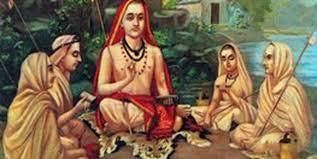
Why in News?
The four Shankaracharyas have recently announced their decision not to participate in the inauguration ceremony of the Ram temple in Ayodhya.
Shankaracharyas
- Origins and Title:
- The term "Shankaracharya" means "teacher of the way of Shankara."
- It is a religious designation held by the leaders of the four Hindu monastic institutions established by Adi Shankara in the eighth century.
- Purpose and Locations:
- Adi Shankara founded these institutions, serving as centers for disseminating knowledge, including shrines, temples, libraries, and living quarters.
- The four institutions are located in Dwarka (Gujarat), Joshimath (Uttarakhand), Puri (Odisha), and Sringeri (Karnataka).
- Role and Responsibilities:
- Shankaracharyas serve as both spiritual leaders and administrators, overseeing the Dashanami Sampradaya, an order of renunciates who follow Adi Shankara’s teachings.
Life and Works of Adi Sankaracharya
- Birth and Background
- Adi Sankaracharya was born in Kaladi, Kerala in 788 CE.
- Philosophy and Writings
- He propounded the Doctrine of Advaita (Monism).
- He wrote many commentaries on the Vedic canon (Upanishads, Brahma Sutras and Bhagavad Gita) in Sanskrit.
- His major work is Brahmasutrabhasya (Bhashya or commentary on the Brahma Sutra).
- Travels and Contributions
- He travelled the length and breadth of India spreading Advaita Vedanta.
- He was responsible for reviving Hinduism in India to a great extent when Buddhism was gaining popularity.
- He was a devotee of Shiva.
- He criticised the Mimamsa School of philosophy and explained a major point of deviance between Hinduism and Buddhism.
- Legacy
- Shankaracharya established four Mathas in the four corners of India and the tradition continues to this day.
- He preached renunciation and adoption of the knowledge path to realize Brahman.
Advaita Vedanta
- Advaita Vedanta articulates a philosophical position of radical nondualism, a revisionary worldview which it derives from the ancient Upanishadic texts.
- According to Advaita Vedantins, the Upanishads reveal a fundamental principle of nonduality termed ‘brahman’, which is the reality of all things.
- The basic theme of Advaita is that the one unchanging entity (Brahman) alone is real while changing entities do not have absolute existence. The world is Maya or illusion and only the Self is real. A person who realises this attains moksha (liberation of the soul).
- The doctrine says that there is no difference between the Atman and the Brahman. The individual soul is not different from Brahman. Hence, its name Advaita meaning non-duality.
Source: Indian Express
What is the Nagara Style, in which Ayodhya’s Ram temple is being built?
Subject: Art and Culture
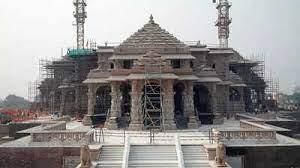
Why in News?
The forthcoming opening ceremony of the Ram temple in Ayodhya, crafted by Chandrakant Sompura and his son Ashish in the Nagara style of temple architecture, has sparked curiosity about India's opulent architectural legacy.
Emergence of Nagara Architecture
- Historical Context: Nagara architecture originated in northern India during the late Gupta period, around the 5th century CE.
- Contrasting Styles: It stands in contrast to the Dravida style prevalent in southern India, both evolving around the same period.
“Languages” of Architecture
- Debating Terminology: While commonly referred to as “styles,” Nagara and Dravida are more accurately described as “languages” of temple architecture.
- Architectural Vocabulary: Each language provides a unique vocabulary and a set of rules for assembling architectural elements.
Distinctive Features of Nagara Temples
- Raised Plinth: Nagara temples are built on elevated plinths, with the sanctum sanctorum (garbha griha) as the most sacred part.
- Towering Shikhara: The shikhara, or tower, is the hallmark of Nagara temples and symbolizes the natural and cosmological order in Hindu tradition.
- Circumambulatory Passage: A path encircles the garbha griha, allowing devotees to circumambulate the inner sanctum.
- Mandapas and Ornamentation: Nagara temples often feature multiple halls (mandapas) and intricate murals and reliefs on their walls.
Modes of Nagara Architecture
- Five Modes: Nagara architecture has evolved over time, leading to five distinctive modes: Valabhi, Phamsana, Latina, Shekhari, and Bhumija.
- Early Nagara Style: Valabhi and Phamsana are associated with the early Nagara style, resembling barrel-roofed structures and multi-eave towers.
- Dominance of Latina: Latina, a single curved tower with equal sides, reigned supreme for three centuries starting in the 7th century.
- Later Developments: Shekhari introduced attached sub-spires, while Bhumija featured miniature spires in horizontal and vertical rows, creating a grid-like effect.
Diversity within Modes
- Simplified Classifications: These modes are scholastic classifications, and actual temple architects didn’t consciously adhere to a particular mode.
- Variation Abounds: Temples often exhibit variations within these modes, with multiple shikharas atop a single structure.
Contrasting Dravida Architecture
- Vimana vs. Gopuram: In Dravida style temples, the vimana (tower) is smaller than the prominent gopurams (gatehouses).
- Boundary Walls: Dravida temples often feature boundary walls, a unique feature not commonly seen in Nagara style temple complexes.
- Ayodhya’s Unique Blend: Ayodhya’s Ram temple combines elements of both styles, featuring a boundary wall but not elaborate gopurams.
Source: The Times of India
Assam’s Sattras and their Political Significance
Subject: Arts & Culture
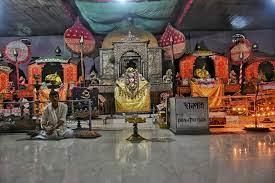
Why in News?
Prior to a campaign rally for general elections, a politician visited the Sri Sri Auniati Satra, a 350-year-old Vaishnavite monastery situated in Assam's Majuli district. These Sattras, deeply connected to the Neo-Vaishnavite reformist movement, hold significant importance in Assamese culture, influencing religious, social, and cultural dimensions.
Spread of Sattras
- Founding: Srimanta Sankaradeva established the first Satra in 1494 in Bardowa, his native village in Nagaon district.
- Expansion: As Sankaradeva preached, Satras were established across the Brahmaputra Valley, including Coochbehar in West Bengal.
- Current Count: There are nearly 900 Satras today, with significant ones located in Majuli island, Barpeta, Nagaon, and Dhubri.
Composition of a Sattra
- Central Worship Hall: Each Sattra has a central worship hall known as “naamghar,” which serves as its nucleus.
- Sattradhikar: A Sattra is headed by an influential leader known as the “Sattradhikar.”
- Bhakats: Monks, referred to as bhakats, are initiated into Sattras at a young age, and their celibacy status varies depending on the Sattra they belong to.
Diverse Sattra Denominations
- Samhatis: Satras fall into four major Samhatis or denominations: Brahma-samhati, Kal-samhati, Nika-samhati, and Purush-samhati.
- Brahma-samhati: Exclusively led by Satradhikars from Brahmin families.
- Celibate Monks: Some Satras, like Dakhinpaat, Auni-ati, Bhogpur, Uttar Kamalabari, and Natun Kamalabari, practice celibacy.
- Varied Succession: Smaller Satras, often family-run, pass leadership from father to son, with monks not necessarily observing celibacy.
Legacy of Srimanta Sankaradeva
- Neo-Vaishnavite Reform: Sattras are monastic institutions that trace their origins to the 16th-century Neo-Vaishnavite reformist movement initiated by Saint-Reformer Srimanta Sankaradeva.
- Spreading Teachings: As Sankaradeva traveled across Assam, his teachings aimed at fostering an egalitarian society, and the establishment of Sattras or Thans played a pivotal role in realizing this vision.
- Cultural and Religious Centers: These institutions are the heart of Assamese culture and serve as centers for religious, social, and cultural reforms.
- Worship Through Art: Sattras propagate Sankardeva’s unique approach of “worship through art” through practices like music (borgeet), dance (sattriya), and theatre (bhauna).
Sankardeva’s Philosphy: Eka-sharana-naam-dhrama
- Bhakti Form: Sankardeva promoted a form of Bhakti known as “eka-sharana-naam-dhrama.”
- Equality and Fraternity: His teachings aimed at establishing a society characterized by equality and fraternity, free from caste distinctions, orthodox rituals, and sacrifices.
- Focus on Prayer and Chanting: Sankardeva’s dharma emphasized prayer and chanting (naam) instead of traditional idol worship.
Sattras and Their Relationship with the State
- Historical Patronage: During the Ahom reign, Sattras received significant donations in the form of land and money from the kings.
- Self-Sufficiency: Unlike temples, Sattras were self-sufficient, producing their own food and sustaining themselves.
- Contemporary Support: In contemporary times, Sattras receive annual grants from both state and central governments, often associated with political motives.
Political Influence of Sattras
- Influence in Elections: While Sattra votes may not be the sole determinant of election outcomes, Sattras and Sattradhikars wield substantial influence.
- Sattra-Based Constituencies: Several constituencies in Assam, like Nagaon, Kaliabor, Majuli, Barpeta, Bartadadrva, have a significant Sattra presence.
- Family Ties: Many Assamese families maintain close ties with one Sattra or another.
- Political Visits: Politicians from various parties frequently visit Sattras, recognizing their importance in the political landscape.
Conclusion
- Sattras, deeply rooted in Assam’s cultural and religious heritage, represent the teachings of Srimanta Sankaradeva and his vision of an egalitarian society.
- These institutions continue to exert political influence in Assam, particularly in Sattra-based constituencies, making them a significant force in the state’s political landscape.
Subject: The Indian Express
GS-II
National Essential Diagnostics List
Subject: Health

Why in News?
The Indian Council of Medical Research (ICMR) has initiated the revision of the existing National Essential Diagnostics List (NEDL) and has called upon relevant stakeholders to provide recommendations for the inclusion or removal of diagnostic tests from the current list by the end of February.
National Essential Diagnostics List (NEDL): Ensuring Access to Crucial Tests in Healthcare
- Objective and Scope:
- The NEDL outlines essential and fundamental diagnostic tests crucial for healthcare facilities at various levels, including village centers, sub-health centers, wellness centers, and primary health centers.
- Initiative and Release:
- Introduced by the Indian Council of Medical Research (ICMR), the first NEDL was unveiled in 2019 to emphasize the importance of diagnostics in the healthcare system.
- Inclusions in the List:
- Encompassing general laboratory tests for common conditions, the list incorporates diagnostics for both communicable and non-communicable diseases.
- Disease-specific tests for ailments such as HIV, hepatitis, tuberculosis, dengue, malaria, and region-specific endemic diseases are part of the NEDL.
- Global Significance:
- India holds the distinction of being the first country to introduce the National Essential Diagnostics List.
- Definition of Essential Diagnostic Tests:
- These tests address priority healthcare needs, considering disease prevalence, public health relevance, efficacy, accuracy, and cost-effectiveness.
- Focus on conditions with a substantial disease burden, ensuring the introduction of diagnostic tests significantly impacts disease diagnosis and management.
Source: The Hindu
Cabo Verde Achieves Malaria-Free Status
Subject: Health
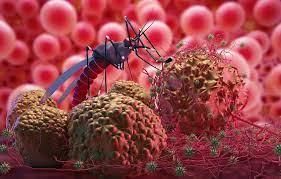
Why in News?
The World Health Organization (WHO) has officially announced Cabo Verde as a malaria-free country, marking it as the third nation in the WHO African region, alongside Mauritius and Algeria, to attain this significant status.
About Malaria
- The Malaria is a leading cause of human morbidity and mortality.
- Despite huge progress in tackling the disease, there are still 212 million new cases of malaria and 430,000 malaria-related deaths worldwide each year according to the World Health Organisation (WHO).
- The Malaria is caused by the Plasmodium parasite.
- The parasite can be spread to humans through the bites of infected mosquitoes.
- There are many different types of plasmodium parasite, but only 5 types cause malaria in humans.
- The Children under the age of 5 and pregnant women are most susceptible to the disease.
- The severity of malaria varies based on the species of plasmodium.
- The Symptoms are chills, fever and sweating, usually occurring a few weeks after being bitten.
About Government of India Initiatives to Reduce Malaria
- The India’s progress in fighting malaria is an outcome of concerted efforts to ensure that its malaria programme is country-owned and country-led, even as it is in alignment with globally accepted strategies.
- At the East Asia Summit in 2015, India pledged to eliminate the disease by 2030.
- Following this public declaration, India launched the five-year National Strategic Plan for Malaria Elimination.
- This marked a shift in focus from malaria “control” to “elimination”.
- The plan provides a roadmap to achieve the target of ending malaria in 571 districts out of India’s 678 districts by 2022.
Source: Indian Express
Chabahar Port: India’s Gateway to Central Asia via Iran
Subject: International Relations
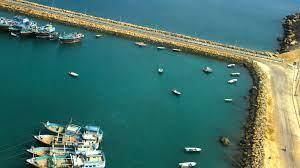
Why in News?
During a recent trip to Iran, External Affairs Minister S. Jaishankar engaged in important talks with the Iranian Minister of Roads and Urban Development. The discussions focused on creating a lasting cooperation framework for the strategically important Chabahar port.
Chabahar Port: A Strategic Gem
- Location: Chabahar Port is strategically positioned at the mouth of the Gulf of Oman in Iran.
- Deepwater Port: It stands as Iran’s first deepwater port, holding a pivotal position on global oceanic trade routes.
- Geographic Positioning: Situated west of Iran’s border with Pakistan, it competes with China’s Gwadar Port, located to the east.
- Strategic Importance: Chabahar Port holds immense strategic importance for both Iran and India.
- Mitigating Western Sanctions: It allows Iran to mitigate the impact of Western sanctions.
- Alternative Trade Route: For India, it offers an alternative trade route, bypassing Pakistan’s restrictions on land access for trade with Afghanistan and Central Asia.
India’s Engagement with Chabahar
- Initiating Ties: India’s engagement with Chabahar dates back to 2002 when discussions commenced between Iranian and Indian officials.
- Strategic Cooperation: A roadmap for strategic cooperation was signed during President Khatami’s 2003 visit to India, with Chabahar as a key project.
- Counteracting BRI: The project gained prominence for India as it sought alternative trade routes amid China’s Belt and Road Initiative (BRI) and the development of Gwadar Port in Pakistan.
- Access to Central Asia: Chabahar’s significance further escalated with India’s ambitions to access Central Asia and Russia.
Development of Chabahar Port
- Two Distinct Ports: Chabahar Port comprises two distinct ports: Shahid Beheshti and Shahid Kalantari.
- Indian Investment: India’s primary investment is directed towards the Shahid Beheshti port.
- Trilateral Agreement: In April 2016, India, Iran, and Afghanistan signed a trilateral agreement.
- Rapid Development: India’s Shipping Ministry rapidly worked towards developing the port.
- Operational Milestones: In December 2017, the first phase of Shahid Beheshti port was inaugurated, facilitating the movement of Indian wheat to Afghanistan.
- IPGL’s Role: India Ports Global Limited (IPGL) played a pivotal role in the port’s operations.
- Phased Expansion: The Shahid Beheshti port is undergoing development in four phases, ultimately reaching a capacity of 82 million tons per year with 32 jetties.
Challenges and Delays
- Geopolitical Hurdles: Geopolitical complexities, particularly Iran’s relationship with the US, have contributed to project delays.
- US-Iran Relations: The fluctuating US-Iran relationship has posed challenges, especially after the US withdrew from the Joint Comprehensive Plan of Action (JCPOA) in 2018.
- Sanctions Impact: India faced challenges in finding international suppliers under sanctions.
- Afghanistan Dynamics: The situation in Afghanistan also affected India’s relations with Kabul but gradually improved.
- Recent Developments: In 2022, India reopened its embassy in Kabul and allocated funds for the Chabahar port project.
- Continued Wheat Exports: India plans to send 20,000 metric tonnes of wheat to Afghanistan through the port in 2023.
Future Outlook
- US-Iran Ties: The pace of Chabahar port development remains tied to US-Iran relations and regional dynamics.
- Ongoing Challenges: Challenges include susceptibility to American sanctions, uncertainties in Afghanistan, and compatibility with the Belt and Road Initiative (BRI).
- Strategic Diplomacy: Active diplomacy, efficient implementation, and operations are vital for overcoming these challenges and maintaining Chabahar’s status as a viable transit hub and a crucial link between Iran and India.
Source: The Economic Times
GS-III
Chang’e 6 Mission
Subject: Science and Technology

Why in News?
The China National Space Administration (CNSA) has revealed that the Chang’e 6 sample return mission is progressing as planned and is expected to touch down on the lunar surface in the first half of 2024.
Chang’e 6 Mission: Unveiling Lunar Secrets from the South Pole
- Objective and Design:
- A planned lunar lander mission, Chang’e 6 is meticulously crafted to retrieve samples from the lunar south pole, contributing pivotal data for understanding the Moon’s geological intricacies.
- Sampling Strategy:
- Aiming to secure samples from the Moon’s far side, the mission is set to collect up to two kilograms of lunar surface material, paralleling the configuration of the successful Chang’e 5 mission.
- Geological Exploration:
- Chang’e 6 embarks on the unprecedented task of exploring the far side of the Moon, unraveling geological mysteries through the analysis of collected samples.
- International Collaboration:
- Showcasing global cooperation, the mission incorporates payloads from the European Space Agency (ESA) and the French space agency CNES, including instruments for ion testing, radon gas measurement, radar calibration, and the contribution of a CubeSat from Pakistan.
- Dual Components – Lander and Rover:
- Chang’e 6 comprises a lander and a rover, with the lander executing a precise touchdown on the lunar surface. Simultaneously, the rover engages in exploration, conducts experiments, and facilitates the meticulous collection of lunar samples.
Source: The Hindu
|
38 videos|5264 docs|1112 tests
|
FAQs on UPSC Daily Current Affairs - 20th January 2024 - Current Affairs & Hindu Analysis: Daily, Weekly & Monthly
| 1. What is the Nagara Style in architecture? |  |
| 2. What is the significance of Assam's Sattras in politics? |  |
| 3. What is the National Essential Diagnostics List (NEDL)? |  |
| 4. What does it mean for Cabo Verde to achieve malaria-free status? |  |
| 5. How does Chabahar Port serve as India's gateway to Central Asia via Iran? |  |
















